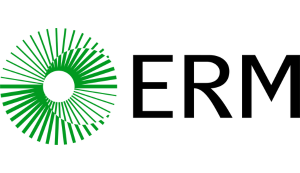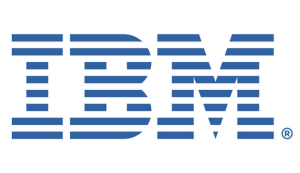Filter By
Browse By
- SAP Analytics and AI
- SAP Application Development and Integration
- All SAP Application Development and Integration
- SAP ABAP
- SAP ABAP Development Tools
- SAP ABAP Test Cockpit
- SAP API Management
- SAP BAPI
- SAP Basis
- SAP BRF
- SAP Business Application Studio
- SAP CMS
- SAP Design Studio
- SAP Development Tools
- SAP DevOps
- SAP EAI
- SAP EDI
- SAP Extension Suite
- SAP Fiori
- SAP Fiori Elements
- SAP Integration Suite
- SAP Low Code Application Development
- SAP Low Code Automation
- SAP Netweaver
- SAP Release Management
- SAP UI5
- SAP Web Application Server
- SAP Web IDE
- SAP Business Process Management
- SAP Center of Excellence
- SAP CIO
- SAP Customer Experience
- SAP Data and Data Management
- All SAP Data and Data Management
- SAP BW
- SAP BW/4HANA
- SAP Crystal Reporting
- SAP Data Archiving
- SAP Data Center
- SAP Data Governance
- SAP Data Integration
- SAP Data Migration
- SAP Data Quality
- SAP Data Services
- SAP Data Strategy
- SAP Data Visualization
- SAP Data Warehouse Cloud
- SAP DMS
- SAP Document Control
- SAP EIM
- SAP ETL
- SAP ETL Tools
- SAP HANA
- SAP HANA Administration
- SAP HANA Deployment Infrastructure
- SAP HANA Studio
- SAP Master Data
- SAP Master Data Governance
- SAP MDM
- SAP Enterprise Architect
- SAP Enterprise Asset Management
- SAP ERP
- SAP Finance
- All SAP Finance
- SAP Accounting
- SAP AR AP
- SAP Asset Accounting
- SAP Billing Systems
- SAP BPC
- SAP BRIM
- SAP Cash Management
- SAP Central Finance
- SAP Controlling
- SAP COPA
- SAP Cost Center Accounting
- SAP e-invoicing
- SAP FICO
- SAP Finance Automation
- SAP Financial Closing Cockpit
- SAP Financial Consolidation
- SAP Financial Planning
- SAP FX Risk
- SAP General Ledger
- SAP Global Tax Management
- SAP Hyperion
- SAP Order to Cash
- SAP Payment Processing
- SAP Profitability Analysis
- SAP Rebate Management
- SAP S/4HANA Finance
- SAP Universal Journal
- SAP Governance Risk and Compliance
- SAP Human Capital Management
- SAP Intelligent Technologies
- SAP Platform and Technology
- All SAP Platform and Technology
- SAP Business Technology Platform
- SAP Cloud Connector
- SAP Cloud Integration Platform
- SAP Cloud Migration
- SAP Cloud Platform
- SAP Cloud Providers
- SAP Cloud Strategy
- SAP Container Platform
- SAP Digital Asset Management
- SAP Digital Integration Hub
- SAP Digital Signature
- SAP HANA Enterprise Cloud
- SAP HEC
- SAP Hyperscalers
- SAP Infrastructure
- SAP Messaging
- SAP Smart Forms
- SAP Quality and Testing
- SAP Security
- SAP Spend Management
- SAP Supply Chain Management
- All SAP Supply Chain Management
- SAP APO
- SAP Asset Management
- SAP Business Network
- SAP Digital Manufacturing Cloud
- SAP Digital Twin
- SAP EWM
- SAP IBP
- SAP Inventory Management
- SAP Label Printing
- SAP Logistics
- SAP Manufacturing
- SAP Manufacturing Automation
- SAP MES
- SAP MII
- SAP MM
- SAP MRO
- SAP MRP
- SAP Order Management
- SAP Plant Maintenance
- SAP PLM
- SAP Production Planning
- SAP S&OP
- SAP SD
- SAP SPM
- SAP Supply Chain Planning
- SAP Track and Trace
- SAP Transportation Management
- SAP System Administration
What is SAP ERP?
An Enterprise Resource Planning (ERP) system makes it possible for organizations to run within a single system their core processes for finance, manufacturing, human resources (HR), supply chain, services, procurement, and other key business functions.
What is SAP ERP?
An Enterprise Resource Planning (ERP) system makes it possible for organizations to run within a single system their core processes for finance, manufacturing, human resources (HR), supply chain, services, procurement, and other key business functions.
SAP ERP solutions are based on over 40 years of experience across all industries and business sizes. They leverage technology that is constantly updated to build ERP tools that can be constantly updated.
The first official SAP ERP solution was the introduction of mySAP ERP in 2004, although this was based on much of the functionality and experience SAP had gained with the SAP R/2 and SAP R/3 business application software suites. While the mySAP ERP solution was targeted at a smaller audience, SAP ERP Central Component (SAP ECC) was introduced in the same and provided all the core business processing capabilities along with data warehouse and enterprise management capabilities in a single system.
The most recent SAP ERP system, SAP S/4HANA, was introduced in 2015 and was a significant shift for SAP as it runs exclusively on the SAP HANA database. A software-as-a-service version of the solution, SAP S/4HANA Cloud, was introduced a year later in 2016. There is a new major release of the on-premise version of SAP S/4HANA each year, while the cloud editions are released quarterly. SAP has announced that they will end the mainstream maintenance and support of all ERP systems other than SAP S/4HANA at the end of 2027.
SAP started to shift their strategy in 2020 to focus more on the cloud-based software-as-a-service ERP system SAP S/4HANA Cloud. This has been done in conjunction with a shift in messaging toward cloud ERP. While most SAP ERP customers are still running older solutions such as SAP ECC, this focus on cloud ERP has been done in conjunction with RISE with SAP.
The biggest factors impacting organizations’ move to newer SAP ERP systems include the opportunity to re-engineer processes or correct configurations from an older system, the upcoming end of maintenance of existing ERP releases, and a desire to transform existing solutions and create a centralized model and structure.
SAP has many implementation partners that will assist organizations with either their initial SAP ERP deployment or a move to SAP S/4HANA from an earlier ERP release. These range from global solution service partners like Capgemini, Cognizant, Deloitte, and T-Systems to smaller partners like smartShift and SoftwareONE that offer solutions and software to help with migration, as well as partners specializing in the migration process itself like Lemongrass.
What Does SAP ERP Do?
An Enterprise Resource Planning (ERP) system makes it possible for organizations to run within a single system their core processes for finance, manufacturing, human resources (HR), supply chain, services, procurement, and other key business functions. SAP ERP solutions are based on over 40 years of experience across all industries and business sizes. They leverage technology that is constantly updated to build ERP tools that can be constantly updated.
By centralizing key functions like sales, security, analytics, and much more into one SAP system, an ERP can help provide a more interconnected experience for users and business leaders. Relying on an ERP can help standardize security measures, help boost sales performance, making the overall experience better for both users and customers.
Benefits of SAP ERP
SAP ERP systems offer significant benefits to their customers. These solutions are available to organizations of all types and sizes. One of the chief benefits is flexibility. SAP ERPs are easily customizable, both in terms of the applications themselves and how they connect and interact within a network overall. ERPs are available in public and private clouds, so users can have online access to the network from anywhere. They can also be used in on-premise only scenarios, offering users the option to keep their IT and security in-house. ERP systems from SAP centralize critical business functions like planning, analytics, and finance all in one place. This saves employees from significant manual work, allowing them to instead spend their time on more value-added tasks.
Types of SAP ERP Systems
Organizations range in size, operate in different industries, and may have unique business needs, so SAP offers several different ERP solutions to meet these challenges.
SAP’s flagship ERP solution is SAP S/4HANA. Released in 2015, this ERP solution runs exclusively on the SAP HANA database. It features modules like Asset Management, Finance, Human Resources, Manufacturing, R&D/Engineering, Sales, Service, Sourcing and Procurement, and Supply Chain. These modules all have different features and functions to meet the needs of their industry.
The full-scale ERP suite is used by companies of all different sizes and provides organizations with the flexibility to respond to shifting business environments. Recent versions of SAP S/4HANA now feature enhanced technological features like machine learning, automation, AI, and other capabilities.
The primary reason that organizations opt for SAP S/4HANA is its simplicity. The system standardizes and simplifies IT and business processes throughout organizations by acting as the core of the business. It can centralize data access from sources within other SAP systems and outside of SAP. This provides business leaders with end-to-end visibility, enhancing their decision-making capabilities.
SAP S/4HANA relies on SAP Fiori as its user interface, which makes interacting with the ERP system a more personalized and user-friendly experience.
SAP S/4HANA is not SAP’s only ERP offering. For smaller and midsize businesses, SAP offers Business One. Billed as a “a long-time favorite of smaller firms and subsidiaries of large enterprises” by SAP, SAP Business One also features cloud capabilities on a more affordable scale for businesses with fewer processes to oversee.
SAP also offers midsized firms a more specialized cloud-based ERP suite known as SAP Business ByDesign. Designed to meet the needs of organizations that are scaling rapidly, SAP Business ByDesign also connects core functions across the breadth of an enterprise.
Some organizations still run on SAP ECC 6.0, a legacy system that predates SAP S/4HANA as SAP’s flagship ERP. That ERP system is being phased out as SAP pushes organizations to complete the transition to SAP S/4HANA. Support and maintenance for the legacy SAP ECC ERP will come to an end in 2027, though SAP does offer users the option of using the SAP ECC 6.0 Enhancement Pack 8 through 2030. Yet to make the most out of an SAP ERP system and gain the benefits of flexibility and the full power of SAP HANA, it is recommended that companies make the switch to SAP S/4HANA.
Organizations should perform a self-evaluation and research the different possibilities to determine which SAP ERP benefits would bolster their enterprise processes the most.
Join SAPinsider to access opportunities for networking and engagement in the dynamic SAP ecosystem. As a member, you will have access to a wealth of valuable resources and content tailored to SAP technologies and best practices like the latest research reports, articles, webinars, and events that will keep you informed and ahead of the curve.SAPinsider membership grants you exclusive access to in-depth analyses, expert insights, and practical guidance that will empower you to navigate the ever-evolving SAP landscape with ease. SAPinsider membership will enable you to remain one step ahead and harness the latest trends, innovations, and strategies to drive your own powerful digital transformations, optimize your SAP investments, and unlock business success.
937 results
-

mySAP CRM Analytics Harnesses SAP NetWeaver BI Analytical Capabilities
Published: 01/February/2007
Reading time: 25 mins
mySAP CRM Analytics, a group of tools offered with mySAP CRM and SAP NetWeaver BI, can help you optimize your company’s customer data. Learn about the mySAP CRM extraction mechanism and delivered analysis tools you can use with your data. Then, explore the standard tool sets available, including customer analytics, product analytics, sales and service...…
-

The ABCs of Preparing SAP ERP HCM Training, Part 2: Note 7 Areas to Improve Training Programs
Published: 07/December/2010
Reading time: 9 mins
Use tips from these seven areas, including change control, authorizations, and evaluation, in planning your SAP ERP HCM training program. Key Concept A training client refresh strategy is a well-planned approach to refreshing the master data within the training clients. This is key for maximizing the value of the training program. A training program is...…
-

Step-by-Step Instructions for a Successful Payroll Implementation Using an SAP ERP HCM Payroll Comparison Program
Published: 31/October/2011
Reading time: 14 mins
Migrating payroll from your legacy payroll systems into an SAP payroll system is a highly complex process and is a major factor for ensuring the overall success of an SAP implementation. Follow this step-by-step process to compare your legacy payroll run with your SAP payroll run for the same period. See how to capture your...…
-
-

How to Integrate Enterprise Systems and an MES Using SAP MII
Published: 29/April/2015
Reading time: 31 mins
Learn how to develop a composite application in SAP Manufacturing Integration and Intelligence (SAP MII) by mashing up data from ERP and a manufacturing execution system (MES). See how to leverage message services and business logic services for ERP and MES integration. Key Concept The information required for manufacturing execution may come from different systems...…
-

Get the Most Out of the New SAP GUI 7.30 Features: A Guide for SAP ERP HCM Users
Published: 25/August/2014
Reading time: 18 mins
With the release of SAP GUI 7.30 comes the addition of many new, helpful features. They include the ability to define local tab order, to write system-specific comments on the logon pad, and to create client-specific color settings. Rehan Zaidi discusses these new features in detail and shows you how to get the most from...…
-

Calculate Actual Costs Across Multiple Company Codes Using a New Business Function in SAP Enhancement Package 5 for SAP ERP 6.0
Published: 01/December/2010
Reading time: 17 mins
The material ledger records the flow of goods from the initial purchase of the raw material to the final sale of the finished product. It assigns any price differences incurred during purchasing and production to the product sold — or at least it does provided that the goods flow remains within a single company code....…
-

A 2016 Guide to the SAP ERP HCM and SuccessFactors Reporting Landscapes and Solutions (Part 2)
Published: 05/January/2016
Reading time: 3 mins
Review the available SAP ERP HCM and SuccessFactors reporting options, including the pros and cons of each. Key Concept Hybrid reporting refers to any scenario in which you are reporting on data from your SAP ERP HCM system in addition to data from any SuccessFactors module. A real-world example is reporting on Payroll data from...…
-
-

Field-Tested Tips and Tricks for Troubleshooting SAP ERP HCM Payroll Processing Errors
Published: 27/December/2016
Reading time: 15 mins
Payroll users can often be overwhelmed by the variety and amount of errors encountered in daily operations. Learn how to categorize these errors logically, see how to resolve them, and get tips for avoiding them going forward. Key Concept In SAP payroll, various master data inputs, configuration setups, and integrations within SAP ERP HCM and...…
-

Decentralized WMS Serves 24×7 Requirements
Published: 15/May/2008
Reading time: 10 mins
Identify the differences between centralized SAP Warehouse Management (SAP WM) and decentralized WM. Examine key considerations for implementing a decentralized warehouse management system for your company. Key Concept Traditionally, users implement SAP Warehouse Management (SAP WM) as part of SAP R/3 Release 4.5 and higher. The decentralized Warehouse Management system (decentralized WMS) provides the option...…
-

Protect Your SAP ERP EIC Data with New Authorization in Enhancement Package 4
Published: 05/January/2011
Reading time: 7 mins
Learn the key concepts of securing employee data contained in the Employee Interaction Center and how to set up authorizations for an HR shared service center. Key Concept Given the sensitive nature of employee interactions, it is important to secure related data in the SAP HCM ERP Employee Interaction Center (EIC) against unauthorized access and...…
Featured Experts
-

-

-

Carles Lamas Martinez
PARTNER, CUVIV BUSINESS SERVICES SL
Become a Member
Unlimited access to thousands of resources for SAP-specific expertise that can only be found here.
Upcoming Events
Related Vendors
Your request has been successfully sent


